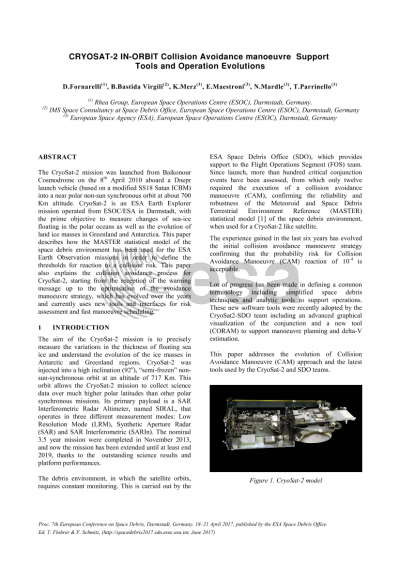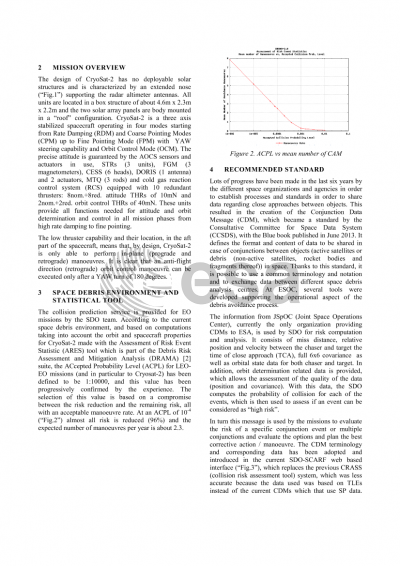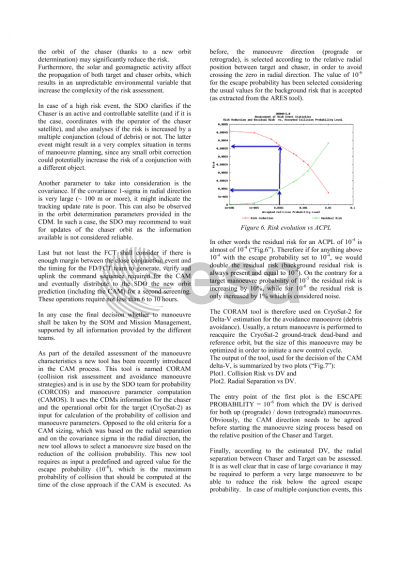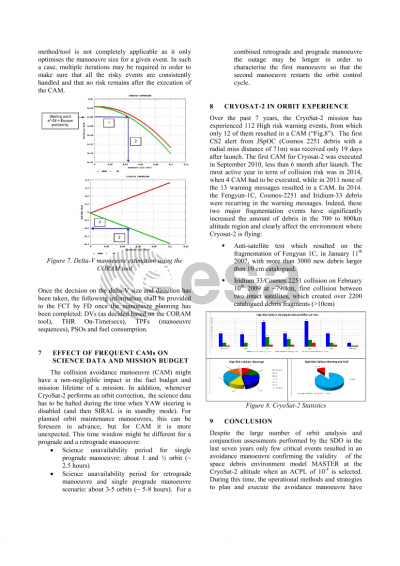Document details

Abstract
CryoSat-2 was launched from Baikonour in April 2010 aboard a modified Dnepr rocket just over 700 Km altitude in a near polar non sun-synchronous orbit. CryoSat-2 is an ESA Earth Explorer mission operated from ESOC/ESA in Darmstadt with the prime objective to measure changes of sea-ice floating in the polar oceans as well as the evolution of land ice masses in Greenland and Antarctica. The nominal 3.5 year mission were completed in November 2013 and now it has been extended until 2017, thanks to the outstanding science results and platform performances.
The debris environment, in which the satellite orbits, requires constant monitoring. This is carried out by the Flight Operation team supported by the Space Debris Office (SDO). Since launch, more than hundred
critical conjunction events have been assessed, from which only twelve required the execution of a collision avoidance manoeuvre, confirming the reliability and robustness of the MASTER statistical model of the space debris environment used for CryoSat-2.
The experience gained in the last six years has evolved the initial collision avoidance manoeuvre strategy confirming that the probability risk for Collision Avoidance Manoeuvre reaction of 10-4 is acceptable. Lot of progress has been made in defining a common terminology including simplified space debris techniques and analytic tools to support operations. New software was recently adopted by the CryoSat2-SDO team including an advance graphical visualization of the conjunction and a new tool (CORAM) to support manoeuvre planning and delta-V estimation.
This paper addresses the evolution of Collision Avoidance Manoeuvre (CAM) approach and the tools used by the CryoSat-2 and SDO teams. Finally, the end-to-end CAM procedure is presented and discussed
with real operational examples, collision avoidance analysis and statistics.
Preview








